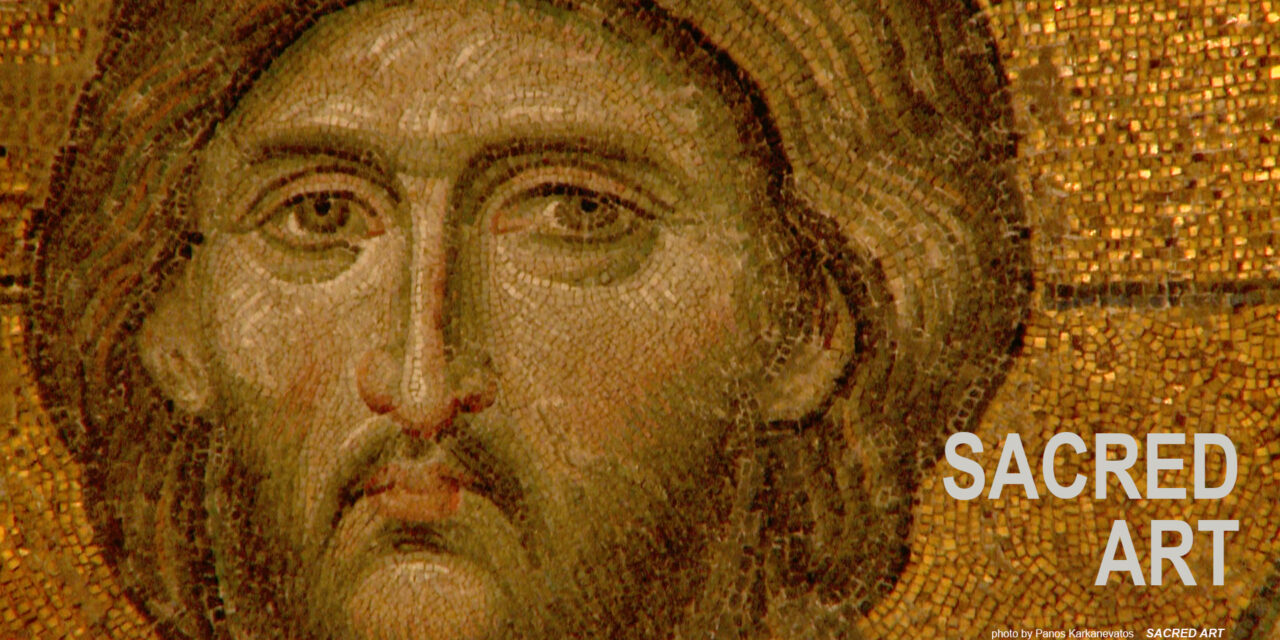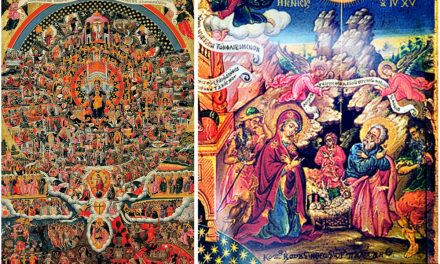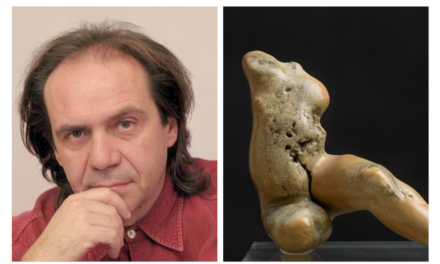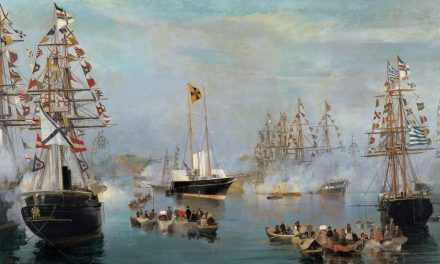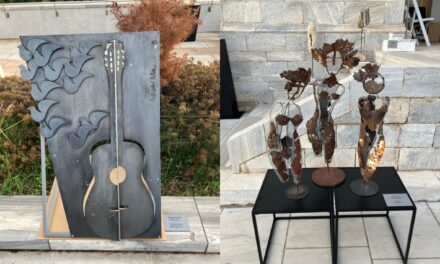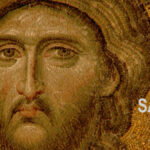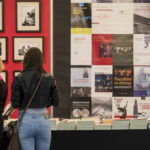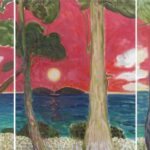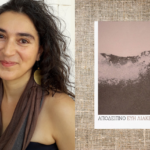Sacred Art is a documentary that encapsulates the very essence of Byzantine art. It offers a unique opportunity to delve into the evolution of Byzantine art over the centuries. Meticulously directed by Panos Karkanevatos Sacred Art, sheds light on the roots of byzantine icon painting, its spiritual elements and exceptional artistic accomplishments. At the same time, the viewer embarks on a unique journey and gets to know some of the most fascinating monasteries and landscapes in Greece. Renowned icon painters and scholars navigate us through various eras and artistic approaches through their insightful remarks.
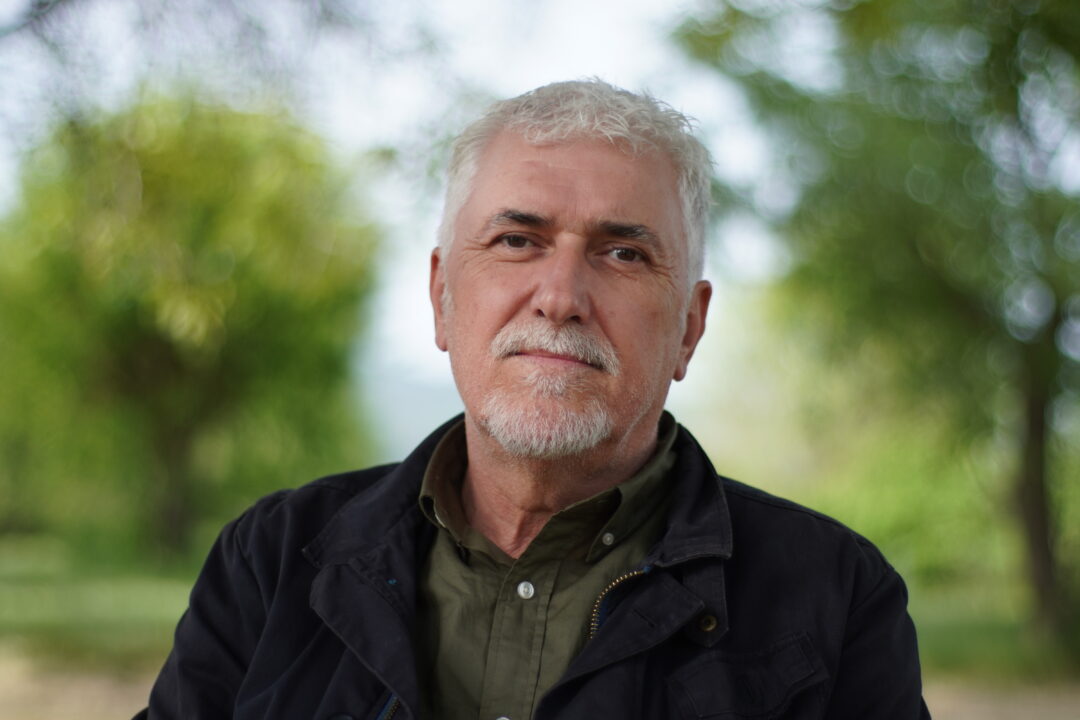
It all started with “egg yolk and a few drops of vinegar”. The egg tempera, in the hands of humble craftsmen, that aimed at depicting the faces of Christ, Virgin Mary and Saints. Since then the incredible journey of this emblematic art has unfolded over the centuries, attempting to provide answers not only in terms of art but also of human condition.
Panos Karkanevatos was born in Serres. He studied cinema in Athens and Paris. His films have been presented in several international festivals, as well as in Universities, Cultural Institutions and Museums, in Europe and in the United States.
Panos Karkanevatos speaks* to Greek News Agenda about filming his documentary on byzantine art, its timelessness, spirituality and relevance to human condition.
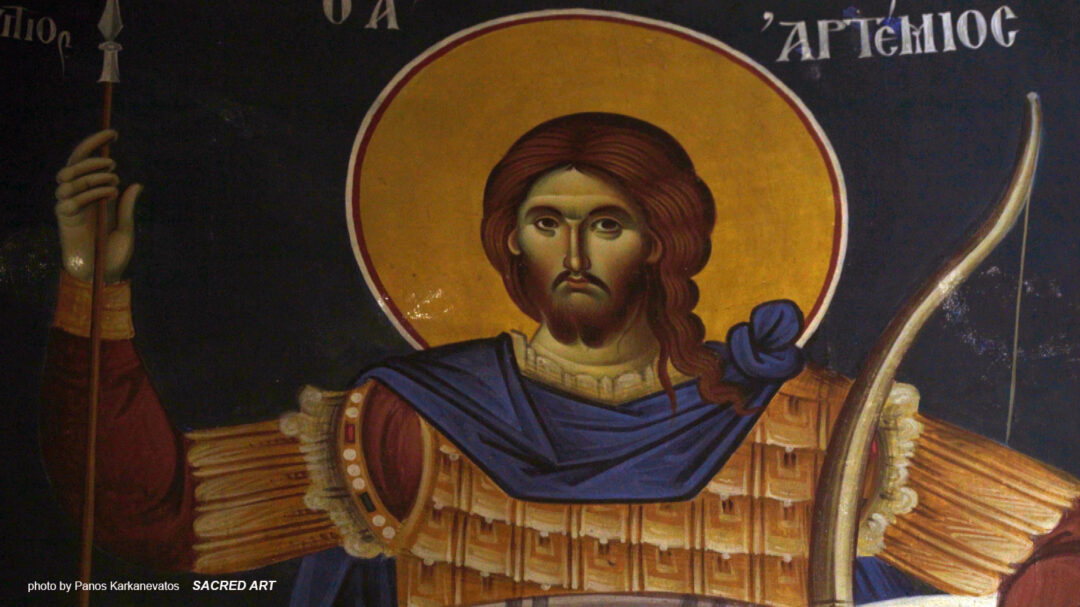
How did you come up with the idea of shooting a documentary focusing on the evolution of byzantine art? What is the purpose of your project?
I made this documentary out of personal interest. When I started making films, I had already studied painting, especially the light effect. Mostly Western art, the Italian Renaissance and the Flemish painters. Byzantine art surrounds us in a self-evident way, we breathe in it. That’s why we often take it for granted. When I finished high school in Thessaloniki, before leaving for France to study film direction, I went to Mount Athos to see Panselinos’ works in the church of Protaton. I was stunned.
That’s the thread I have now picked up. I was deeply concerned about how much we know about byzantine art, in what ways we are a part of it in terms of the Greek element underlying it and how much it is relevant to us today.
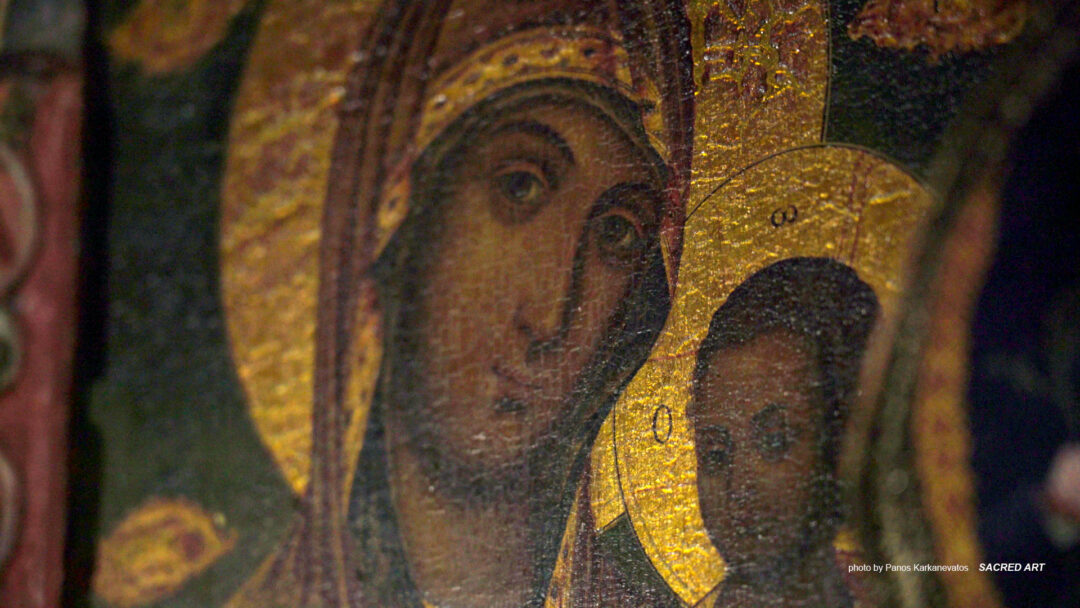
This new journey began from the same pier in Ouranoupolis. I met great painters, icon painters, craftsmen. Creators of an art that is essentially about us, and not only because it is an integral part of our identity, but also because we have so much to learn from it.
I was motivated by the awareness of the space and time that connects the image and the heart of the person standing in front of it. The deep communication that is achieved. This accomplishment is not only related to faith, but also to aesthetics.
I embarked on this journey with great companions. My goal was to approach Byzantine icon painting in a simple way. I wanted to narrate its great aesthetic achievements, but also the way it has become a part of our collective identity and self-consciousness.
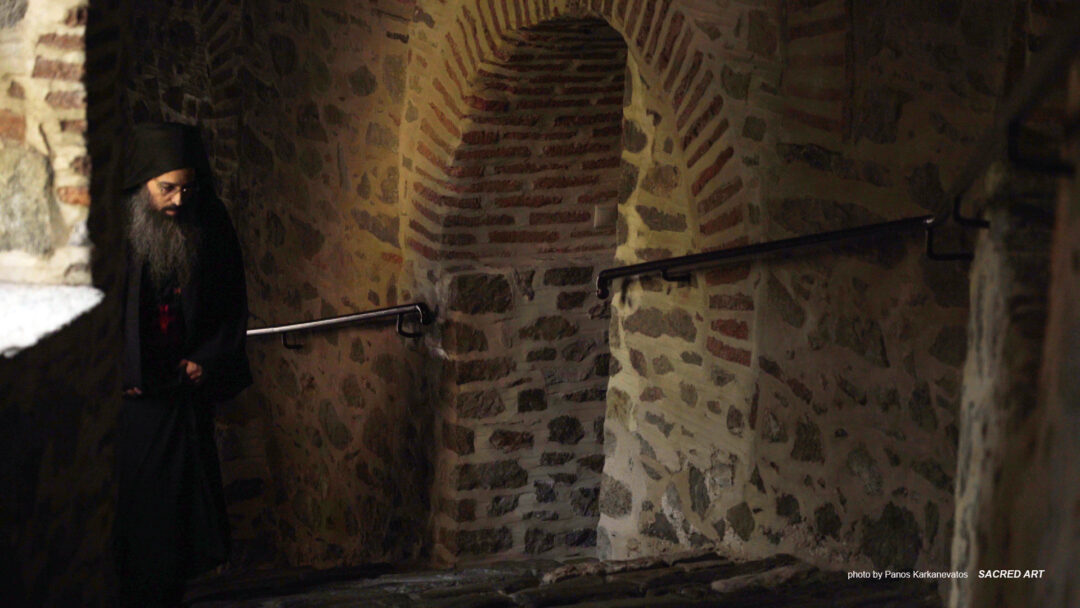
You have shot incredibly beautiful landscapes. Which one impressed you the most? Were there any challenges during filming?
I couldn’t just pick one. It’s not just the beauty of them. It is the energy and the timelessness that runs through them. It’s their timeless dimension that is so impressive actually. In a strange way, this also permeates the landscape, or at least that’s how I personally saw the landscapes.
We shot in many places in Greece and abroad. We mainly shot in stunning Mount Athos, in Hagia Sophia, in Istanbul, as well as in St. Nicholas, at Ground Zero, in New York.
We traveled a long way, passing through the most emblematic moments of Byzantine icon painting.
It was very important for me to have the trust of the artists, and those who have taken it upon themselves to preserve this legacy. And I am grateful they have trusted and offered their support along the way.
Bringing the material together was a huge challenge; as well as filming in a more sophisticated way, which essentially is the simplest way possible. Of course there were difficult moments but that’s another issue.
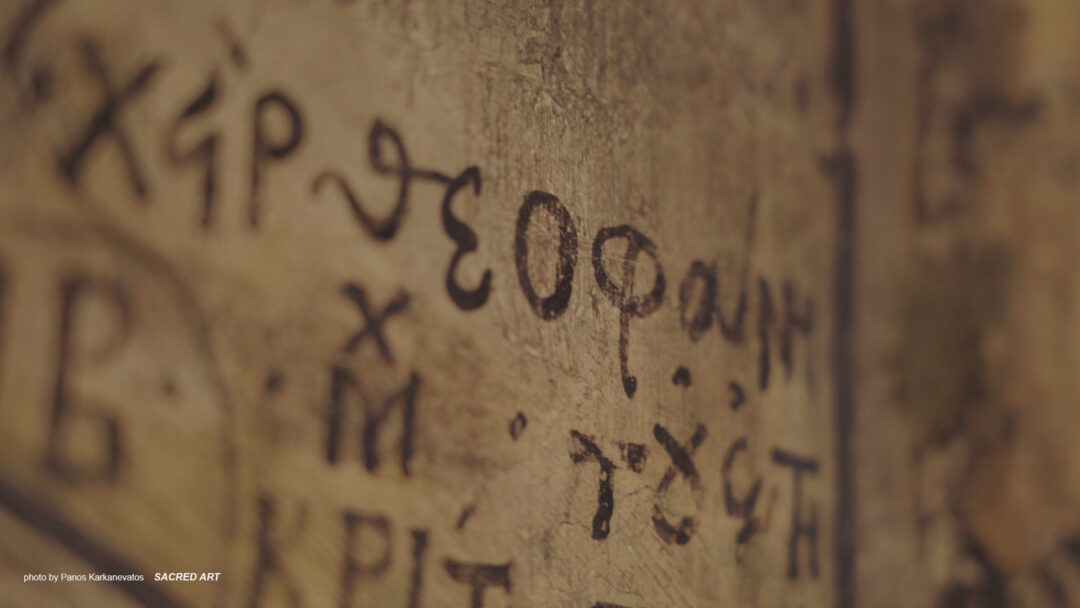
It is truly impressive how open icon painting has been over the centuries to various artistic influences. What has contributed to this in your opinion? Is this also the case today?
I believe that over the centuries, icon painting, although it deals with themes that do not change, at the end of the day it is somehow connected to secular art, to the society. In that sense, it has always been a product of historical circumstances.
The extraordinary achievements of the Palaiologan period came as a result of the Palaiologan will to reconnect with classical antiquity.
The painters who fled to Venetian-occupied Crete after the fall of Constantinople, and the dialogue with Western art, produced great painters and works, influenced by various artistic approaches.
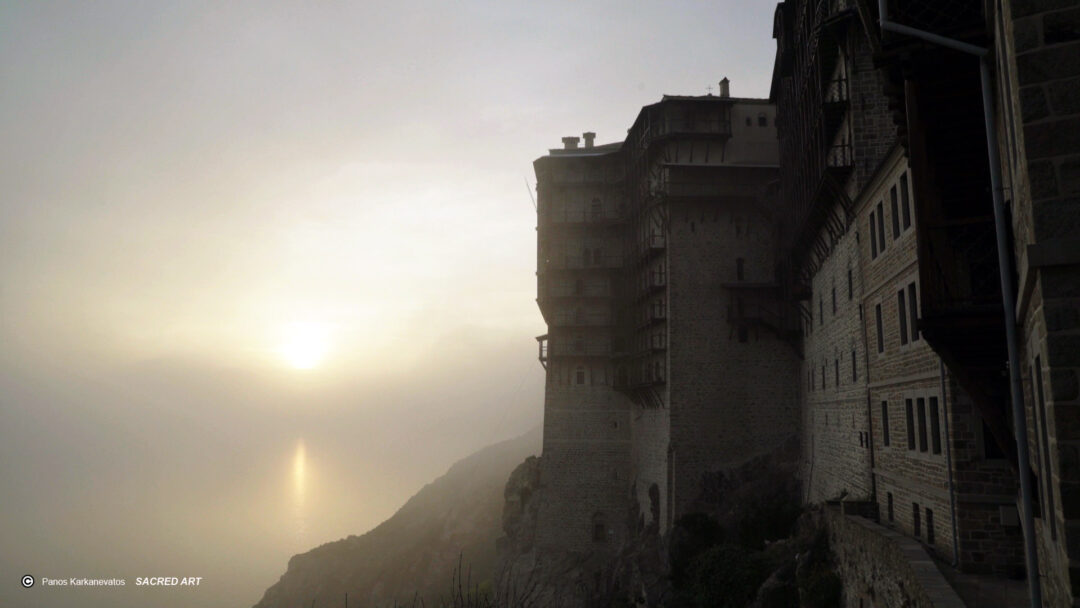
The folk painters who followed the groups of the craftsmen from Epirus who built the mansions and churches in Pelion during its heyday in the first half of the 19th century, created a folk version of painting. The influence of the Russians on Mount Athos and the arrival of the Bavarians, with the creation of the Greek state, imposed oil painting and a naturalistic depiction of the themes. Nazarene art followed and then Kontoglou, who was a true catalyst in icon painting. Papaloukas, Parthenis, Vassiliou, Kopsidis followed, paving the way for a new breakthrough.
I believe that in all periods artists created art influenced by different conditions, but also the way they felt. They were in constant dialogue with their times, and with the respective artistic trends. One way or another, icon painting has always retained its value.
I think this has been the case in recent years too. Distinct artists are creating works of great value, coming to join previous masters of this art.
Which are the characteristics of Byzantine art that make spirituality and connection with human condition possible?
Timelessness, abstraction, light. The inverted perspective. The simplicity. The humble freedom of the gaze.
Could you tell us more about the screenings so far?
The documentary was recently screened at the National Library of Greece at the Stavros Niarchos Foundation, at the Cité Universitaire-Fondation Hellénique in Paris and the Aristotle University of Thessaloniki and soon will be screened in New York, Boston, and Los Angeles.
* Interview by Dora Trogadi
Read also via Greek News Agenda: Athos, the ‘Holy Mountain’; Meteora, the hanging monasteries of Greece; Fotis Kontoglou, The Greatest Icon-Painter of Modern Greece; Byzantine and Christian Virtual Museum
TAGS: ARTS

